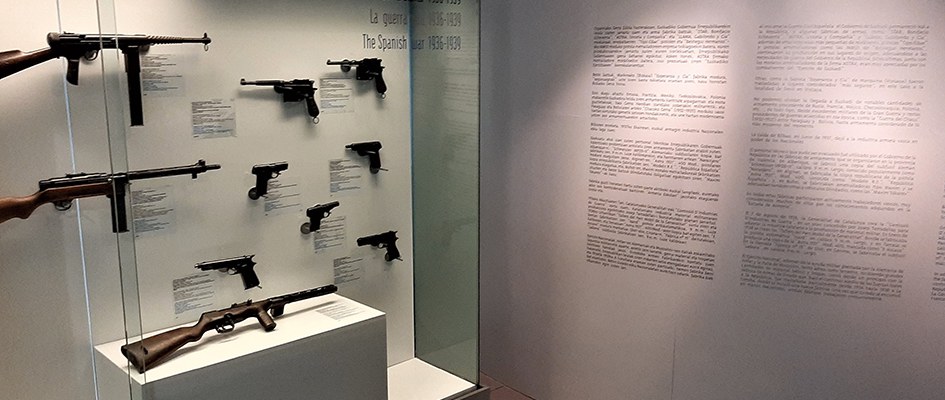The Spanish Civil War 1936-1939

At the outbreak of the Spanish Civil War, the Basque government remained loyal to the Republic and a number of arms producers such as STAR, Bonifacio Echeverría, ASTRA, Unceta y Compañía and LLAMA, Gabilondo y Cía, as well as other smaller companies supplying revolvers, Eibar type pistols and machine-pistols like the Beistegui Hermanos MM31, continued to produce arms without moving elsewhere and geared production to the wartime requirements of the government of the Republic. The MM31, together with the machineguns produced by the firm ASTRA, proved to be most popular among the combatants of the Army of Euzkadi.
Others, such as the factory Esperanza y Cía located in Marquina (Vizcaya), were transferred to locations regarded as safer, in this case moving to Derio in Vizcaya.
Large quantities of arms of all kinds were sent to the Basque Country from countries like Russia, France, Mexico, Czechoslovakia, Poland, etc? These shipments included surplus military equipment from the Great War, weapons left over from wars that had recently drawn to a close, such as the Chaco War (1932-1935) between Paraguay and Bolivia, in addition to arms regarded as the most advanced of the time.
The collapse of Bilbao, in June 1937, however, caused the Basque armaments industry to fall into the hands of Franco?s army.
Those trained workers lucky enough to be evacuated in time were set to work in the arms factories that the Republican government hastily set up in the province of Valencia. A copy of the German Erma MP35, 9 x 19m.m. Parabellum, sub machine gun, popularly known as the Naranjero, was made in Alberique, in Alginet the republican copy of the Astra 1921, Mod. 400 pistol, known as the Model R.E. (República Española), while in Buñol they produced Maxim-type machine guns and modified others to be fitted onto armoured vehicles, like the Maxim Tokarev.
Basque workers played an active role in all these factories, and many were held in high esteem thanks to the skills they had acquired in the Armoury School.
On the 7th of August 1936, the Generalitat of Catalonia created the *Comissió D?Industries de Guerra, headed by Josep Tarradellas with a view to adapting Catalan industry to the war effort. In January 1938 the Tallers del Parc Mobil de la Generalitat were founded and produced the Isard 9 mm calibre automatic pistol, while in Terrassa a copy of the Astra1921 Mod.400 was made, identified as F.Ascaso. Finally, in the plant known as Factory nº 15 in Olot, Gerona, they produced the Labora* 9mm calibre sub machine gun.
In addition to the vast military aid sent by Nazi Germany and Mussolini, in the form of troops, planes and arms, from the outbreak of the war Franco had control of the Arms Factory of Oviedo. Besieged by forces loyal to the Republic, during the first two years of the war it was partially transferred to La Coruña, where a new factory was established. Once Oviedo had fallen to Franco?s army, both factories worked together.

